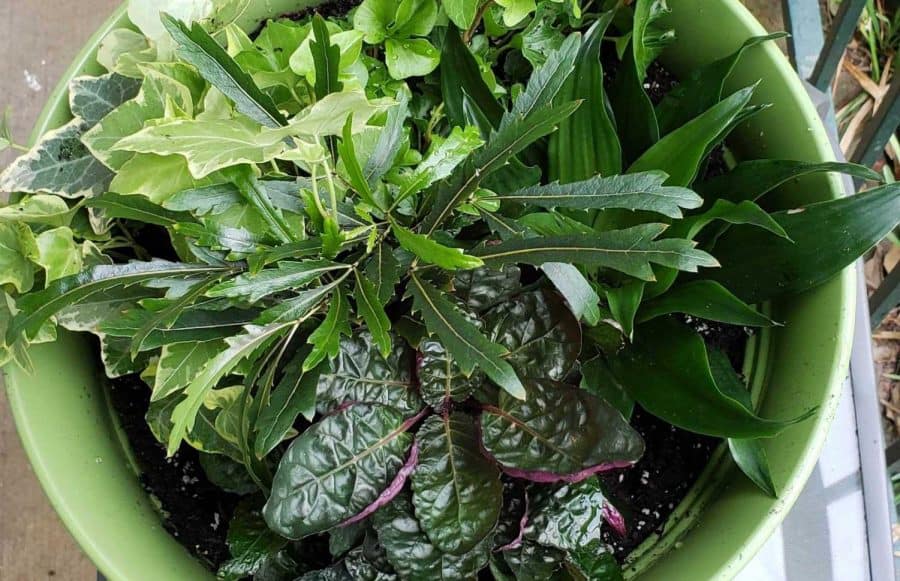Tips for budding plant parents
August 25, 2021
For many animal lovers on campus, being far away from home means leaving behind their favorite furry companions. Pet-friendly housing complexes are expensive and hard to come by, and most student apartments don’t offer enough space for a cat or dog to roam freely.
Houseplants may be the solution. If students have a lot of love to give but not a lot of time, space or money to do so, a potted companion may be the best option for them.
For those looking to dive head-first into the world of plants and nature, there is an organization on campus that prides itself on bringing nature lovers together.
UA Environmental Council is a student-run organization for like-minded plant parents and nature enthusiasts. The club works year-round to promote environmental awareness, sustainability and activism.
Benefits of Owning a Plant
Houseplants do more than liven up any gloomy dorm or apartment. Some scientific studies have shown that owning a plant comes with health benefits for the mind, body and spirit.
A study published in the Journal of Physiological Anthropology said that interacting with an indoor plant “can have positive effects on human stress response mediated by cardiovascular activities.”
The study concluded that having multiple natural stimuli acting on all five senses went hand in hand with increased relaxation, satisfaction and happiness — emotions that college students could benefit from.
Researchers at NASA discovered that owning houseplants directly correlates with better air quality, which may produce long-term health benefits.
NASA’s research on the potential benefits of owning house plants revealed that houseplants are capable of removing 87% of air toxins in 24 hours.
In addition to the physical benefits, ancient practices like horticultural therapy have paved the way for researchers to study the benefits of plants for our mental health.
Horticultural therapy, formally studied and developed by Dr. Benjamin Rush in the late 18th century, uses plant-oriented activities designed for human socialization, rehabilitation and mental and physical healing.
The practice is seen at inpatient facilities around the globe, since the passive, nondiscriminatory nature of a plant means that it will respond positively to anyone’s care, regardless of who they are.
Types of Indoor Plants and How to Take Care of Them
While hundreds of flora are native to Alabama, the beauty of a climate-controlled living space is the ability to grow almost any shade- or sun-dwelling plant.
The University of Alabama prohibits pets in dorm rooms but not plants, meaning that anyone living on campus can pick out a plant for their space.
Riley Kapanjie, a senior majoring in chemical engineering and an experienced gardener, said the first plant she got in college was a pothos.
“They’re low maintenance and need very little water and light, so they can sit on the desk in your dorm,” Kapanjie said. “The plant I am proudest of now is my Monstera deliciosa. They’re very popular, and can be indoor or outdoor, but in the hot Alabama sun, I’d recommend keeping it indoors.”
HGTV recommends “unkillable” plants such as broadleaf thyme, African violet and elephant’s ear kalanchoe, all of which thrive under arid and dry conditions. Other low-maintenance plants include succulents, cacti and aloe.
For students looking for some exotic flare in their indoor tropical plants, Kapanjie recommends getting a humidifier to mimic a tropical climate without putting them outside.
“If you want to graduate to a higher-maintenance tropical plant, I would recommend a Calathea ornata,” Kapanjie said. “The pink stripes are beautiful, and the leaves open and close during the day and night.”
Popular plant vendors close to campus, like Lowe’s and Home Depot, tag most of their plants with the recommended amount of sunlight or shade, so if students find themselves buying from a store instead of a farmer’s market or plant nursery, they should consult the label on the plant.
The label will tell if the plant is an “annual,” meaning you have to buy a new one each year, or a “perennial,” which will grow back on its own. Students should consider their living area and the amount of sunlight or window space up for grabs before shopping for their dream plant.
Brown’s Greenhouse is a local plant nursery that offers an abundance of perennials, annuals, vegetables and herbs. House Plant Collective is another local nursery that specializes in selling indoor plants.
Taking Care of Plants
It’s important for plant owners to research the plant’s caretaking instructions to ensure its longevity. If students are taking care of an herb, vegetable or harvestable plant with healing properties like aloe, it’s crucial to create an environment for their plants to blossom so that it can reward owners with the literal fruits — or vegetables — of its labor.
Wink Wood, a sophomore majoring in environmental science and a self-proclaimed plant parent, said no matter which kind of plant you end up with, research is key to its longevity.
“A good rule of thumb is to water if the soil is dry, and always make sure your pot has a hole in the bottom for drainage,” Wood said. “Another thing is sunlight. … If the tips of the leaves are turning yellow or brown, and it’s getting the right amount of water, the issue is probably too much sun. If your plants are pale and spindly, they need more sun.”
“Bottom-watering,” or filling a wide, shallow bowl with water and then placing the pot inside to soak it up, is Wood’s trick to making sure his plants never have too much or too little water.
Miracle-Gro is a reputable line of plant food, fertilizer and compost engineered to nurture any plant needs not being met by regular watering and sunlight. Other reputable brands for fertilizer and plant food include Jobe’s Organics, Osmocote and Schultz.
A good rule of thumb for most herbs and flowers is to water once a day before noon, when temperatures approach their hottest point.
According to HGTV, succulents need water at most three times a week during the spring and summer during their growing season. When winter hits, the growing stops, so it is best to leave them alone. If desert-dwelling plants like cacti, aloe or succulents receive too much water, their roots will rot and the plants will die.
HGTV said container sizes also matter. Larger planters have more soil to hold moisture for a longer period of time, whereas shallow and small containers need to be watered more often.
All students need is a window, some patience and a plant.
This story was updated on Aug. 28 to correct the pronouns of a source.





















